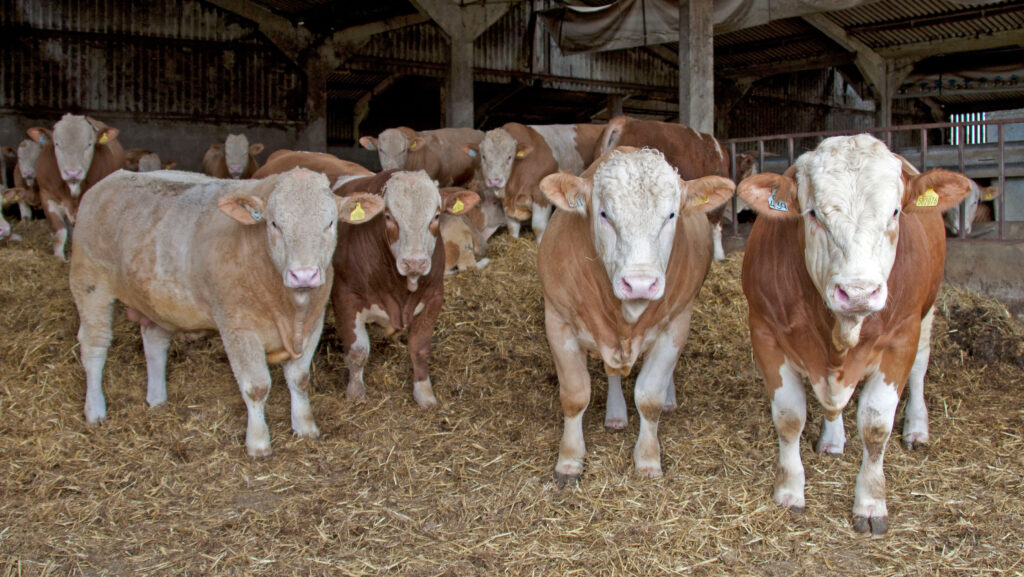Leaner prime cattle driven by genetic and market factors
 © Tim Scrivener
© Tim Scrivener A higher prevalence of dairy beef has led to GB prime cattle carcasses becoming leaner during the past five years, according to figures from the AHDB.
In 2019, grades E to U represented 19% of the total kill, dropping to 16% by 2024.
However, in 2024 the proportion of throughput achieving P grades fell year-on-year by 0.5%, returning to 2019 levels.
See also: Beef and sheep sector reinvigorated by strong trade and rainfall
Figures also show that in 2019, 50% of GB prime cattle kill was a fat class of 4L or above, which by 2024 fell to about 41%.
In August 2025, 42% of prime cattle throughput achieved either an R3 or R4L classification, compared to 38% over the same period in 2024.
According to AHDB analyst Grace Bolton, this represents a small and gradual change, driven by both genetic and market factors.
Producer incentives
“Market factors can be very influential on carcass weights and finish. Higher beef prices and favourable feed costs may incentivise producers to increase finishing weights,” said Ms Bolton.
Conversely, she added, animals may be sent to slaughter at lighter weights when beef prices are lower and the cost to finish an animal to a higher weight wouldn’t make economic sense.
Ms Bolton added that on the breeding side, there has been a noticeable shift upwards in carcass classification from 2023 to 2024.
“This is indicating a shift in dairy beef genetics and potentially we’re seeing higher carcass classifications coming through this year, as these beef calves are becoming more valuable and the data shows carcasses are delivering on spec more often generally,” she said.
“When looking at our GB deadweight cattle sample so far in 2025, prime cattle carcass weights have tracked above 2024 for much of the year, potentially encouraged by historically high beef prices and comparatively low feed costs.”
Livestock Auctioneers Association (LAA) executive secretary Chris Dodds said: “More people have been aware of that massive price value difference between a heavily penalised animal in an abattoir to something that’s actually getting a premium in the market.”
Mr Dodds added he had noticed a change in demand.
“There’s more people now putting their heavy, thicker cattle into the market because that’s where the demand is. People want them properly finished and they don’t want them three quarter meat,” he said.
Mr Dodds added that overall numbers are expected to tighten year-on-year due to a smaller pool of prime cattle under two years old.
However, Iain Macdonald, market intelligence manager at Quality Meat Scotland (QMS) said:
“Low slaughter in Scotland through June and July suggests a build-up of stock on farms, with a rebound in the kill in late July likely to continue through August and September.”
